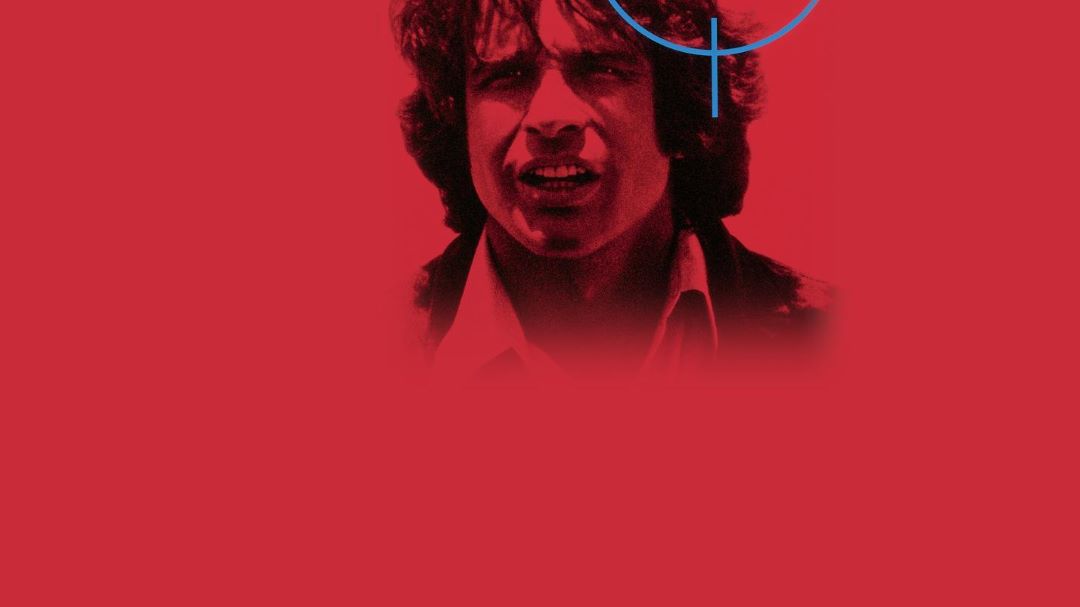The Parallax View (1974) stars Warren Beatty. It has themes of conspiracy, paranoia, and ends the way movies from the 1970s often end. All The Parallax View lacks to make it a quintessential 1970s movie is satanism…and maybe Farrah Fawcett.
But is it any good? Let’s view The Parallax View.
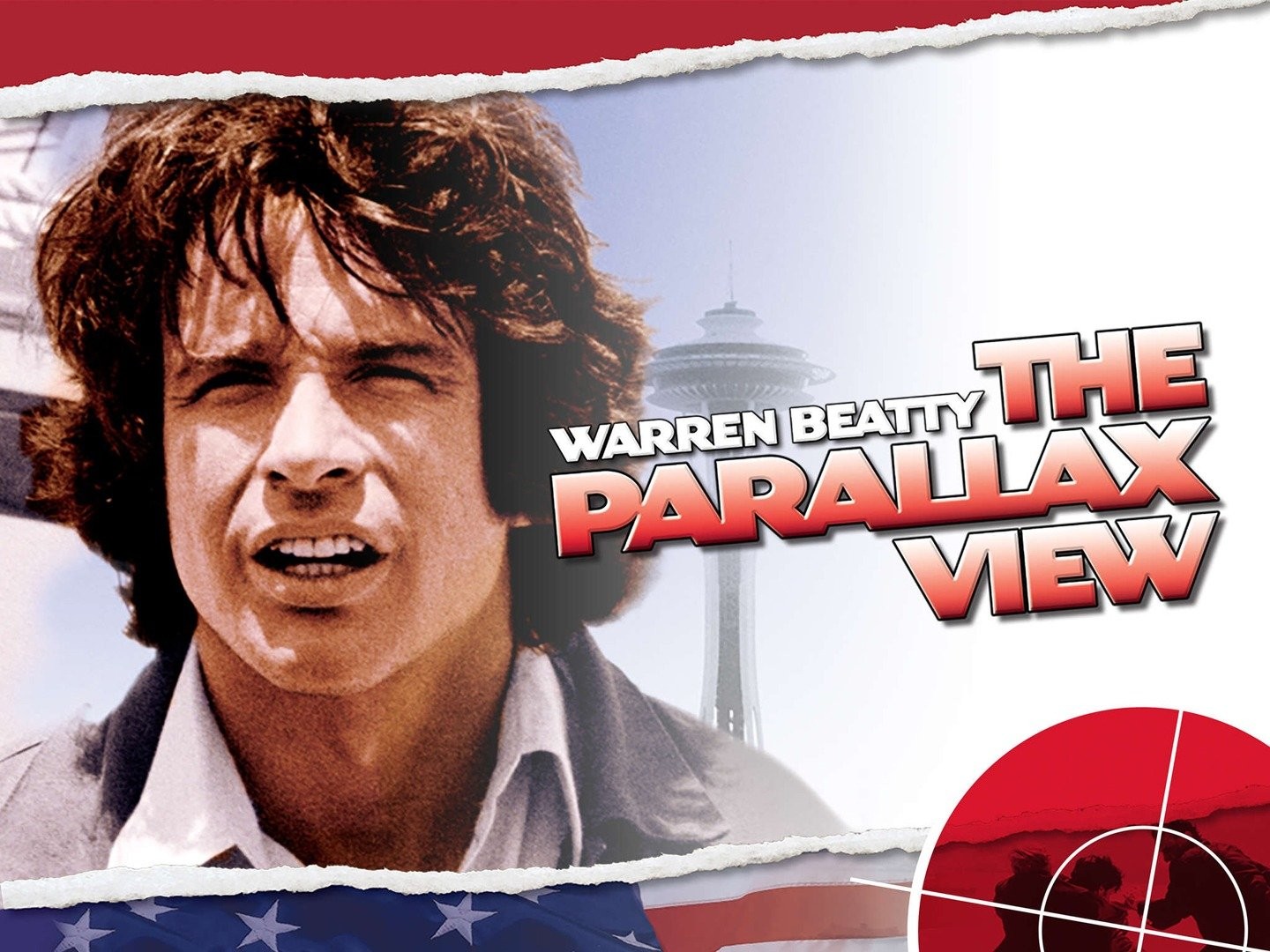
The Parallax View To A Kill
The movie starts off with the assassination of a US Senator. This broke suspension of disbelief, as the Senator is only 44-years-old. Nowadays, one can’t become a senator unless they have spent at least a decade in an old folk’s home and regularly matriculate in their own pants.
It appears that a waiter assassinated the senator, but it was actually a different waiter that killed the man. If this sounds confusing, cut the makers of The Parallax View some slack. 1974 is not very far from the 1960s, so everyone was still dealing with a contact high.
The different waiter is played by Bill McKinney, who made Ned Beatty squeal like a pig in Deliverance. I figured that must have led to some great jokes between McKinney and Warren since Ned was Warren’s brother. Lo and behold, it did not. Warren and Ned are not even related! I was today-years-old when I discovered that. I always thought they were siblings, but you know what they say about assuming…
Eventually, it comes to the attention of Warren Beatty’s character that witnesses of the senator’s assassination are mysteriously dying. He sets off to investigate, which leads him into a world of shadowy organizations with vague, nefarious goals.
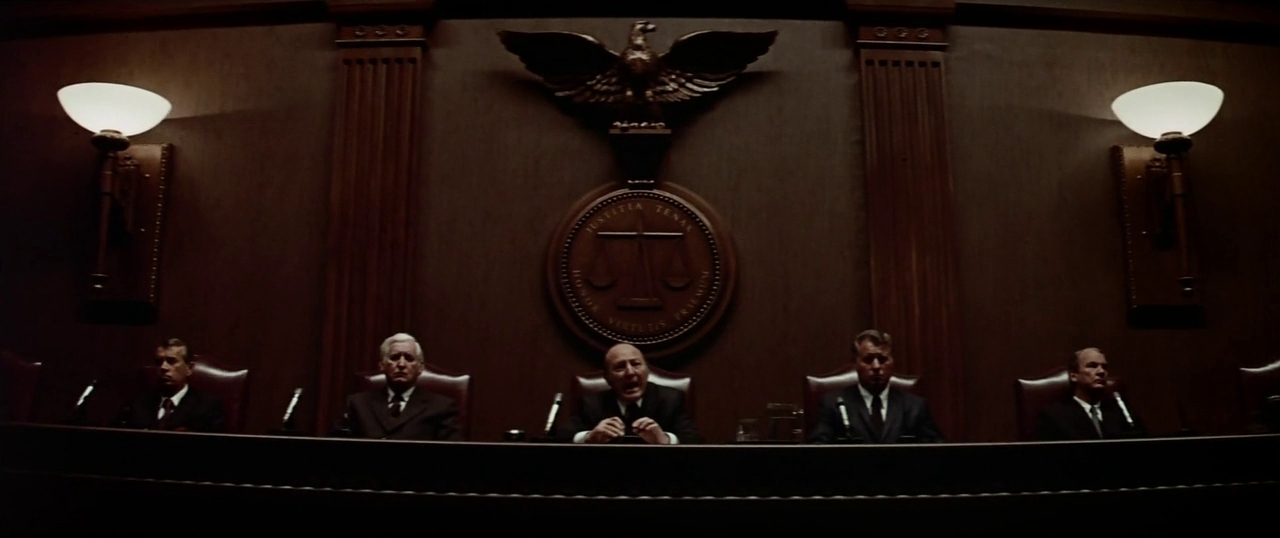
The Parallax View Point
The Parallax View has clever elements going for it. The idea of a shadowy organization recruiting assassins via a psychological test is superb. Unfortunately, it is not fully explored. For example, how is the test disseminated? The movie doesn’t say. It appears folks come across the test randomly.
A more nightmarish way to do it is to have the test administered in schools across the country as standardized learning tools. Then the shadowy organization could pick out the kids who score the craziest and recruit them for training.
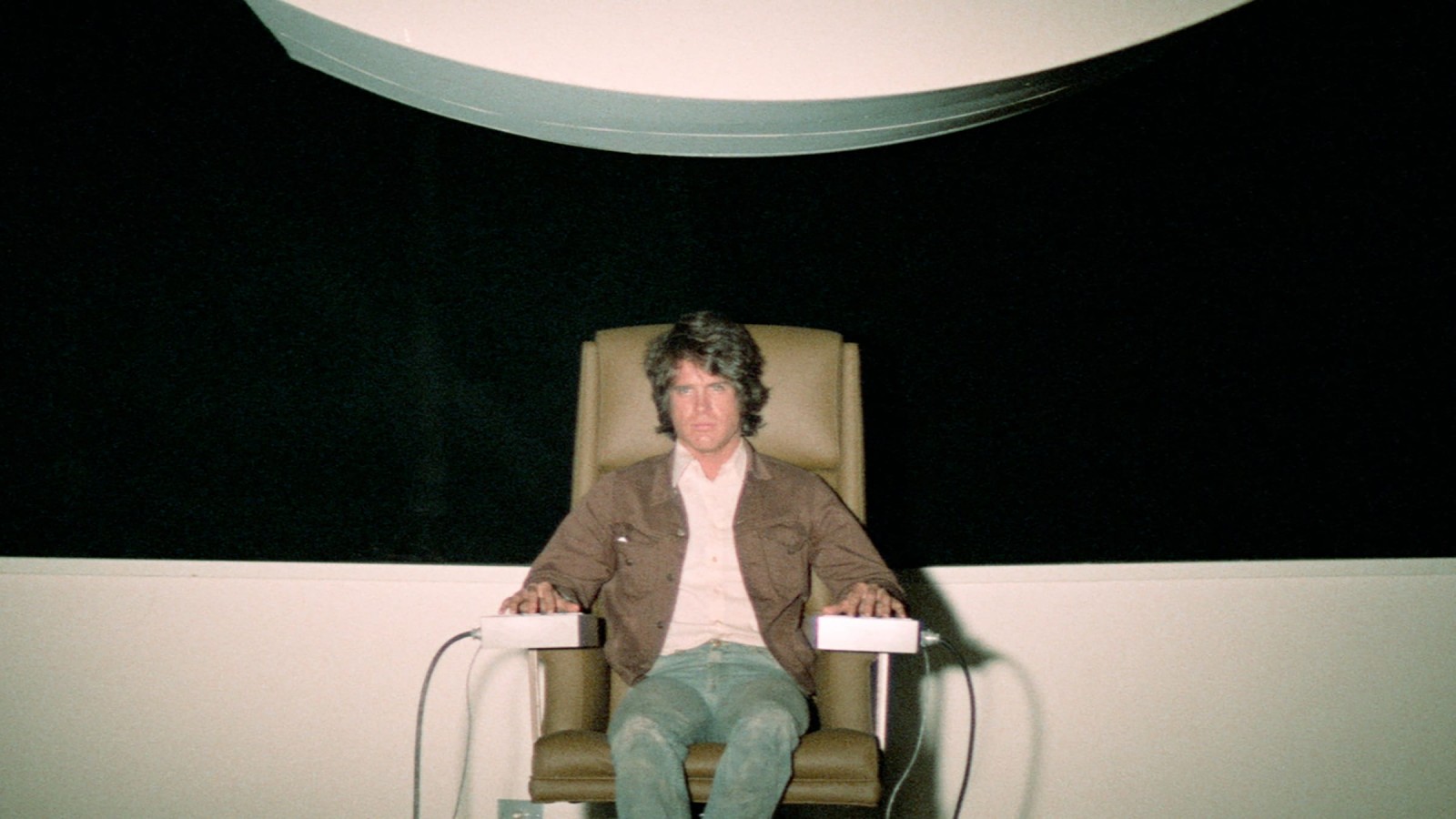
The Parallax View is based on a novel by Loren Singer. The screenplay was written by Lorenzo Semple, Jr., who is notable for the Batman TV series, King Kong 1976 and our recently reviewed Bond movie, Never Say Never Again.
David Giler, of Alien fame, also contributed to the screenplay. This was back before Giler went into full Hollywood Exec mode on Alien 3 and moved to Thailand for the…ahem…culture.
The Parallax View Finder
Alan J. Pakula directed The Parallax View. Pakula has a solid resume with Klute, All The President’s Men, Sophie’s Choice, and more. He even helmed a Brad Pitt/Harrison Ford movie that somehow no one cared about ever: The Devil’s Own.
Pakula does nice work on The Parallax View. For example, the way he squeezes suspense out of something as simple as passing a stewardess a note is well done. Plus, Pakula’s handling of the LA Convention Center at the end is suitably cold in its god’s-eye view of things.
The Parallax View is cleverer than average in the way it delivers this climax. The standard way to do it is to have an assassination attempt at an active political rally (think The Manchurian Candidate).
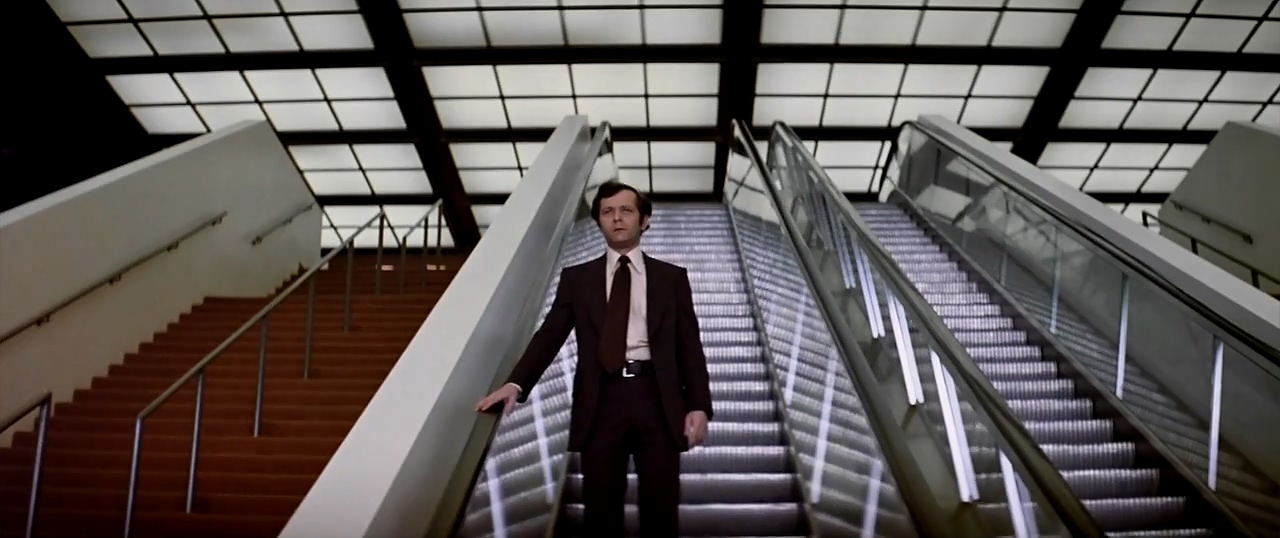
Instead, the assassination attempt takes place during rehearsal. The way the huge space is empty, the band is practicing and a recorded speech of the intended victim is played over the sound system while he ditty-bops his way into danger is a great spin on standard ideas.
The Parallax View of the Montage
Perhaps the strongest part of The Parallax View is an experimental film-like montage that comes out of nowhere. At one point, Beatty visits the shadowy organization’s headquarters and is shown the montage while they grade him for selection.
No explanation is given for any of this. All of a sudden, the viewer is subjected to a series of images and music depicting old-time American values, fascism, and even drawings of Thor by Jack Kirby. One gets the sense that the purpose of the montage is to show the would-be killer that they are actually superheroes standing between chaos and things worthy of protection.
Elements like this give The Parallax View an odd tone at the end of the day. It almost feels like it has a science-fiction undercurrent happening, yet none of this is overt. In some ways, this tone reminds one of Michael Crichton’s Coma.
The Parallax View of the Cast
Warren Beatty is an actor I don’t have much experience with, but he was a big deal at the time. His performance here is a bit aloof. One gets the sense he is playing more to the camera than he is playing a part. It seems like Beatty hopes this is a role, and a movie, that will make him look smart, while he, nor anyone else, is absolutely sure anything intelligent is happening at all.
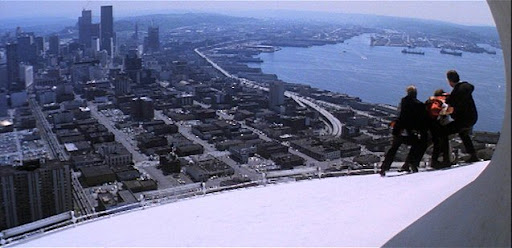
Joining Beatty in this hazy endeavor is Paula Prentis, star of another famous 1970s conspiracy/science fiction flick, The Stepford Wives. Hitchcock buddy, Hume Cronyn, plays Beatty’s newspaper editor boss. Crone brings so much weariness to any part he plays that one sometimes wonders if he was born ready to die. If Hospice was a person, man…
William Daniels, who would eventually play Mr. Feeny on Boy Meets World also stars as one of the witnesses to the assassination. Meanwhile, the sublime Kenneth Mars, of The Producers and Young Frankenstein fame, puts in a brief appearance, along with Anthony Zerbe.
The Parallax View
The Parallax View ends up being a movie that is parts rather than a sum of them. One moment Beatty is a swinging bachelor in Seattle. Then he is playing Dukes of Hazzard in the country until it is time to hang out in the bathroom of an airliner. How about a ride on a boat? Sure, why not!
One is never quite sure what is leading Beatty to all of these random locations. The Parallax View is basically a giant montage in and of itself, rather than a logical sequence of events.
This plays to the movie’s favor to a certain extent. It creates an intriguing mystery. One wants to find out what is going on. Yet, due to the way the story is written, one is never given truly satisfying answers. The viewer is left to piece it all together with their own logical facilities. This is when questions arise because some parts of the movie are not particularly logical.
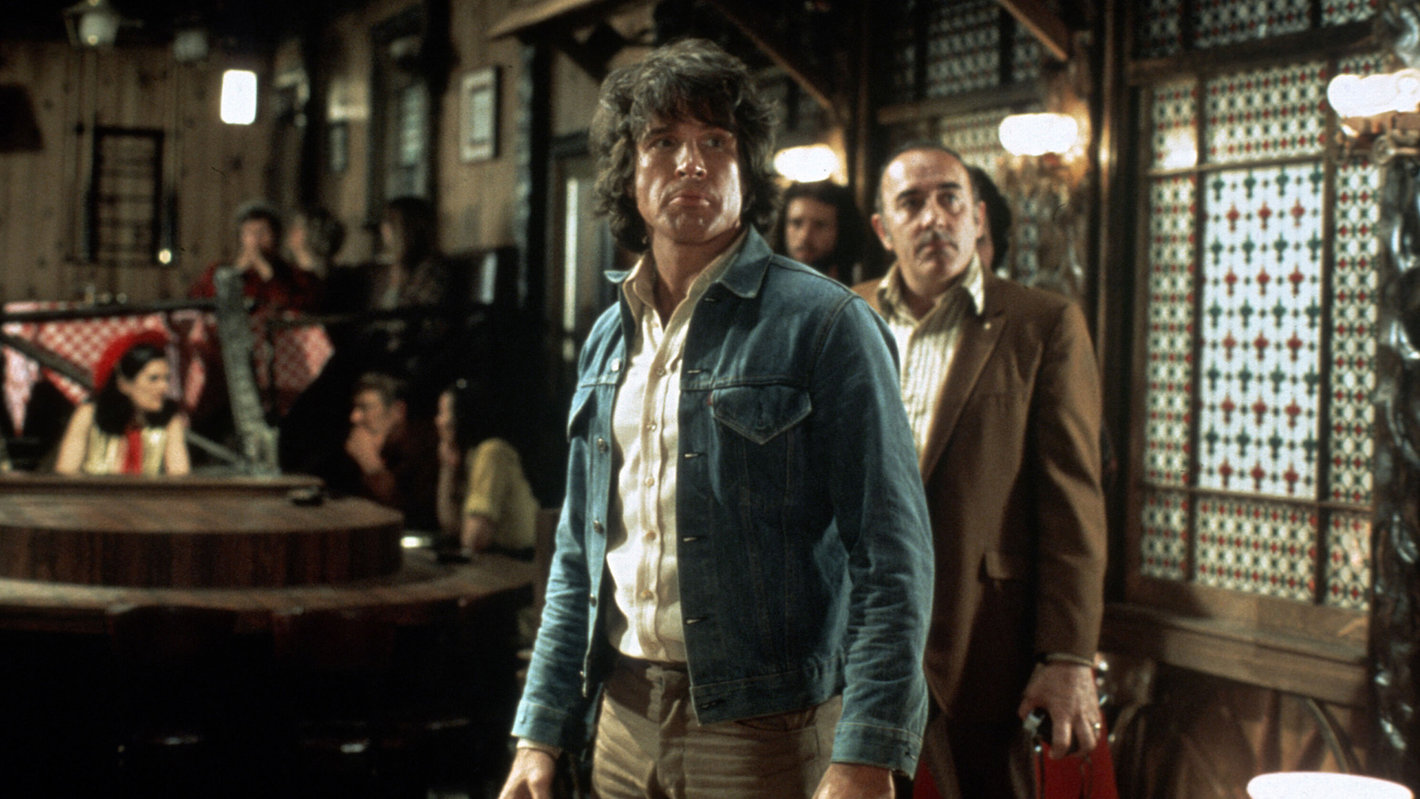
One wonders if Arlington Road was perhaps influenced by The Parallax View. Both films have some similarities in how they go about their business. The Parallax View certainly has grander ideas, but Arlington Road is better at putting its ideas onscreen.
The Parallax View is not the best of the 1970s conspiracy genre, but this kind of movie always holds something of interest. It won’t make you cross your eyes, but it won’t change your view of the world either. Through the modern lens, the idea of a shadowy organization recruiting assassins to alter elections is a bit quaint. Social media can do the job just as effectively. Plus, pop-up ads are a nice income supplement.

Check back every day for movie news and reviews at the Last Movie Outpost



